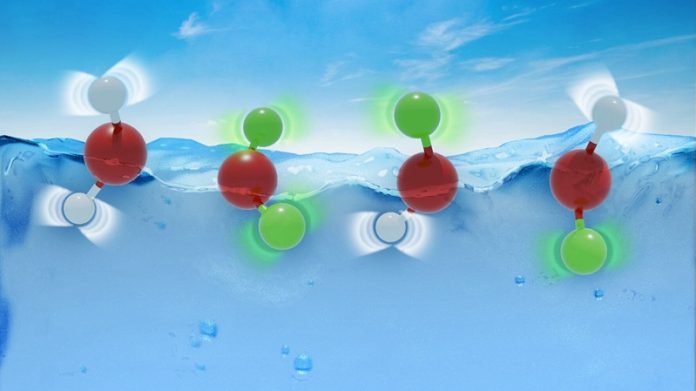
Water covers more than 70% of our planet, and it’s made of H₂O—two hydrogen atoms bonded to one oxygen atom.
But there’s also a rare version of water called “heavy water,” where the hydrogen atoms are replaced by deuterium, a heavier form of hydrogen with one extra neutron.
Since deuterium is about twice as heavy as regular hydrogen, you might expect heavy water (D₂O) to behave very differently.
Surprisingly, it doesn’t. For example, it freezes only 4°C higher than normal water.
Scientists at the Max Planck Institute for Polymer Research, led by Mischa Bonn, have finally figured out why.
Their study, published in Science Advances, shows that two opposite quantum effects cancel each other out, keeping the properties of heavy water and regular water surprisingly similar.
In quantum mechanics, even at absolute zero temperature (–273°C), atoms never stay completely still. They vibrate slightly in what’s called “zero-point energy.”
In water, hydrogen atoms vibrate a lot because they are so light. This means they don’t stay at one fixed distance from the oxygen atom—they exist in a kind of blurry “cloud.” These quantum vibrations are called nuclear quantum effects (NQEs).
When hydrogen is replaced by heavier deuterium, the atoms vibrate less and move closer to the oxygen atom.
This effect makes the water molecule slightly smaller and affects how it interacts with other water molecules.
In this “intramolecular” effect, the bond within the water molecule tightens, and the distance between neighboring molecules increases, making them easier to separate—like when ice melts.
But there’s another quantum effect happening at the same time. Deuterium atoms also vibrate in directions perpendicular to their bond with oxygen. This “intermolecular” effect strengthens the bond between different water molecules.
So, while one effect weakens the molecular connections, the other strengthens them—and the two nearly cancel each other out.
To measure these tiny differences, the researchers used a powerful technique called HD-SFG spectroscopy, which let them look at how water molecules vibrate at the surface where air meets water. By carefully studying the behavior of water with different amounts of deuterium, they could finally measure both effects.
This is the first real-world proof of the tug-of-war between these two quantum effects in water—something scientists had only predicted with theory until now.
The research helps us better understand water’s unique behavior, which is vital in areas like climate science and biology. It also opens the door to studying quantum effects in other complex materials.



